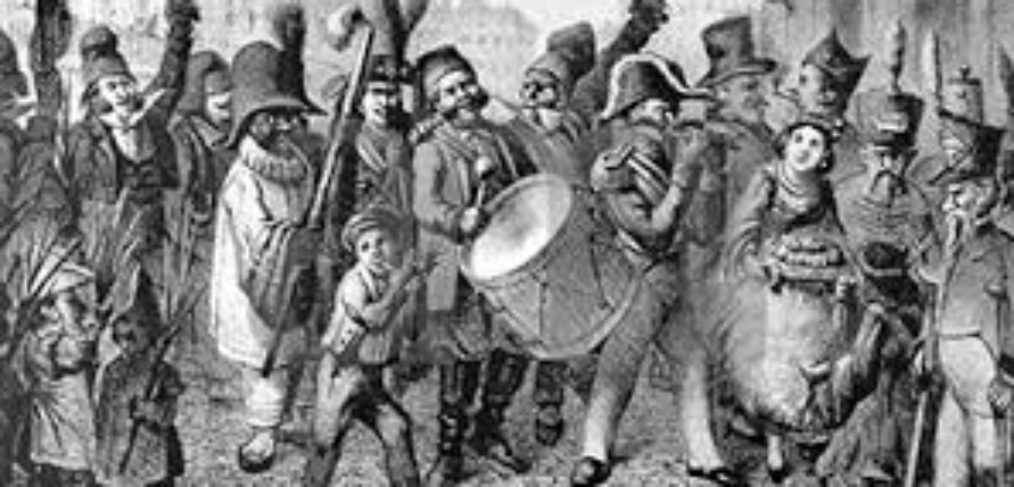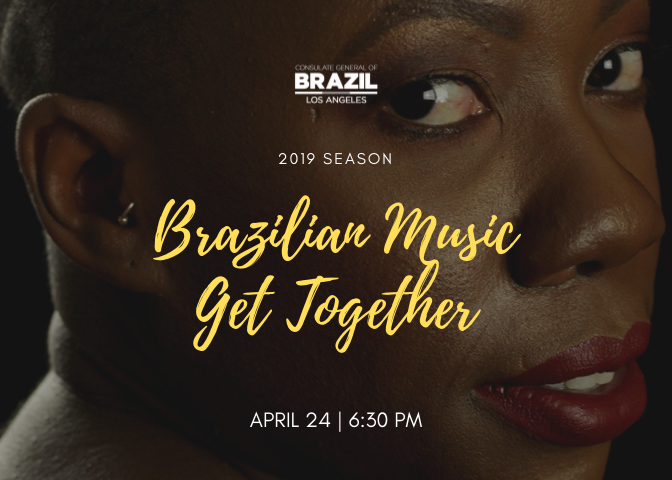There’s nothing better to do in sunny California than visiting a beach on a Saturday afternoon. The bloco (community street carnaval band) gathered under the trees on the sandy beach and began the soundcheck with samba music. As they practiced, people gravitated towards the music; some came representing Brazil with their colors and flags, others wore costumes, colorful wigs, and feathered crowns.
People began to parade behind the bloco, ready to dance and chant to the music. Children, adults, men, women proudly representing Brazil animated onlookers to join and dance as well. Others curiously followed and watched. Many began to show their skilled samba moves.
Every now and then you can hear the Abadá Capoeira instructor shouting “Roda! Roda!” encouraging the young children to stand in a circle and perform for the people. The sounds of the berimbau and atabaque resonated through the roda and lead the rhythm that guided the young capoeiristas in their martial art. At times the highly trained capoeira instructors would pick up the pace and play one another, keeping crowds on their toes as they swung their feet right over the others head, dodging them by mere inches!
The weather was perfect and proved to be a great day to parade. As we marched down the boardwalk the bloco kept their energy up for the crowd and the capoeira school proved to be entertaining. It was a time to dress up, be extravagant, and dance to the sound of Brazil. Although it seemed to end as quickly as it began, it was a great family-friendly event within the community. We hope it only gets bigger and better from here and we hope that even more people will join us next year to celebrate such a unique tradition!
Special thanks to Fabio Santana with Kizambo Brass Band.
Ali Lexa and Samba da Mudança.
Abadá Capoeira
Kristal Bivona – UCLA.
UCLA students who helped promote it.
The community at large for participating!
KPFK the media sponsor.
Made possible by Brazil Arts Connection
By Samantha Tello
The famous Brazilian Carnival (in Portuguese: Carnaval) is a religious, specifically Catholic event by origin, but is also rooted in European pagan traditions. Originally, Carnival was a food festival, because it was the last time to eat abundantly before the 40 days of Lent, a period of frugality starting on Ash Wednesday. Legend says the word ‘Carnaval’ was derived from the Latin expression ‘carne vale’ which translates as ‘farewell to the meat’. It makes sense now, no?
The unique characteristics of Brazilian Carnaval are rooted in a cultural clash between the Portuguese and the Africans. The whites brought the festival from Europe (Entrudo, an alternative name for Carnaval in Portuguese) and the blacks had their rhythms, music and dance moves. This sounds like the perfect combination! Don’t you think?
Gradually, as the years went by, the tradition was created to go once a year onto the streets to have a party together that lasts 5 days, ending on Ash Wednesday. Musical styles and other customs merged over time. It is a big deal to many people to celebrate this day, it is a piece of their heritage, connecting them to their ancestors who really knew how to party.
In 1916 this culminated with the publishing rights and phono recording of “Pelo Telefone” by Donga and Mauro de Almeida in Rio de Janeiro. Samba we can say is very much a product of the mutual love for the music of the former colonists and the former slaves. Today, this is music and dance that can be seen as a symbol of the Brazilian culture. In Rio de Janeiro, the first samba schools were established in the early 1920s; the first samba parade competitions were held in 1933.
Fundamentally, the origin of Brazilian Carnaval is very much the concept of ‘pretending’: social conventions are turned upside down. Only these few days of the year it is ‘allowed’ to release a form of catharsis. The idea of presenting themselves as something they are not began as a pagan holiday in ancient Greece and Rome, during which masters and slaves would swap clothes, the rich would wait on the poor, and basically everyone would get drunk and toss all social rules out the window. The poor can wear expensive costumes, the rich can mingle in the streets with the common folk and dress down, men can wear women’s clothing, women can wear barely any clothing. Like we said earlier, it was a safety valve to release all the social pressures that build up in a society where some are more powerful than others. During Carnaval in Brazil, your options are limitless! What would you want to be?
Carnaval is a legitimate opportunity to let yourself completely go in order to forget all your day to day troubles. Basically, Carnaval is a temporary escape into a fantasy world that makes your dreams reality… Are you ready to experience it and have fun?

By Yennifer Padilla
Brazil!
You think of the music, beautiful beaches, soccer, carnival, capoeira, the amazing food! Almost all aspects of what makes Brazil Brazil has been because of the undeniable contributions by the Afro-Brasileiros. Today, image is everything, especially in the fashion and beauty world. When it comes to Brazil and beauty you instantly think of models Adrianna Lima and Gisele Bunchen. These are the figures that have represented this country but the fashion and beauty world have made drastic changes over the years and is becoming inclusive of all shades, sizes, genders, and ages. This is not only true for models who are at the forefront but also behind the scenes with beauty gurus and fashion designers. In Brazil, more than 50% of the population identifies as black or brown and the afro-brazilian fashion industry is thriving despite the imitation and appropriation.
So what exactly is Afro-Brazilian fashion? Although it is open to interpretation there are common roots in the use of styles, prints and fabrics from African countries mixed with distinct Brazilian aspects. One distinct Afro-Brazilian designer named Renato Carneiro is the inventor and founder of Katuka Africanidades. Renato and his family are originally from São Paulo, Brazil and are considered Paulistanos. When Renato visited Salvador, he was inspired and felt a connection to the city. Eventually, he would move to Salvador and pursue his calling as a fashion designer, founding Katuka Africanidades. His shop is a 3-story building on a street corner with a beautiful view of the ocean.
“I make my clothes for the Black people who want to reclaim their connection to their African heritage.” Renato felt strongly about creating spaces to express the African identity of the people. Spaces to express not only their identity but sexuality. His design’s purpose isn’t just to be worn, but to inspire and educate the public about what it means to be Afro-Brazilian. Some of his inspirations for the colors, fabrics and jewelry designs can be traced to Nigeria, Senegal, and Benin. As mentioned before, the Afro-Brazilian fashion trends are growing in popularity but unfortunately what is considered “trendy” or “in” is largely influenced by white designers who claim that Afro-Brazilian fashion is not a place for the politics of race but rather open for all to use. This is when it becomes important for the people to be conscious about who they are consuming from. Using culture for personal gain rather than spreading a message of self-love and acceptance continues to be a problem, not only in Brazil but around the world.
Renato Carneiro’s aim is to bring visibility to this African rooted culture and to reclaim African identities back into the hands of descendants themselves. “I wanted to create a place that affirmed the plurality of all our lives. A place that focused on the heritage of Afro-Brazilians, people in the diaspora and in Africa.” Renato has an unquestionably deep respect and commitment for his African roots.
by Yennifer Padilla
Every year millions of people from all over the world go to Brazil and experience a week-long celebration known as Carnaval. Looking to immerse themselves in the rich culture of music, dancing, lavish floats, and intricate costumes.
Over 70 samba schools participate and the top Rio de Janeiro samba schools compete in Carnaval, parading and looking forward to being recognized as the best. But what does it take to be the best? First, each school is responsible for choosing a theme, then the school creates the storyline, composes the music, creates the choreography, floats, and costumes. At the competition, schools are judged in 10 categories and each category is rated from 7-10. It is a PROCESS (elaborate holiday) that takes months of planning, hard work, and commitment. Two of the 10 categories include “Allegories and Props” and “Vanguard Commission.” In both these categories, the extravagant costumes and how well they fit into the storyline of the theme are an essential part.
The transformation of costumes overtime should be noted. Originally, only socialites would dress in luxurious costumes and masks that covered nearly every part of the body while commoners watched as a sign of wealth and status. Over time more and more people began to join in the celebration but with the heat in Brazil during the month of Carnaval, being completely clothed was not comfortable or practical. As people joined the festivities, the costumes became fun, colorful and creative making them more accessible and inexpensive. Eventually, things took a different turn and by the 1950’s women began wearing colorful bikinis. Today we see men and women covered in gems, feathers and body paint and of course, showing more skin.
With the growing popularity of Carnaval and the competition itself, samba schools have hundreds, even thousands of participants. The floats and costumes are given life by a Carnaval designer. The designer must consider all aspects and how they will fit together. Once the vision has been approved by the samba school, costume prototypes are sent to production lines and made in mass. Visitors and people within the community can join in the fun of dressing up and parading. Participants must buy costumes in advance and choose between the ground of float costume. Ground costume attire is unisex and people parade down the street. Each school can have between 6 to 7 floats. Selected members wear the most elaborate costumes, for example, the flag bearer and her escort not only wear richly designed costumes but are also one of the categories judged for the competition in terms of presentation, dance, interaction, and symbolic protection of the samba school banner.
Once the party is done what happens with all the costumes that are valued at hundreds even thousands of dollars? Few keep them as souvenirs but for those who will not be competing in the parade of champions, they shed their beautifully colored layers and toss them away… then looking forward, wait and see what the following year brings with more feathers and fun.
Brazil Arts Connection is proud to co-sponsor One Globe Radio at the LACMA Latin Sounds concert taking place on July 20th, 2019 at 5pm. Click here for more information. Free event!

Brazilian Guitar Ensemble
Nando Duarte, Rogê & Roberto Montero
Photography Exhibition by Juliana Sakae
The Beautiful Immigrant Project
April 24 | 6:30 PM
Vinicius de Moraes Galery
Consulate General of Brazil in Los Angeles
https://www.eventbrite.com/e/2019-brazilian-music-get-together-tickets-59912793779












